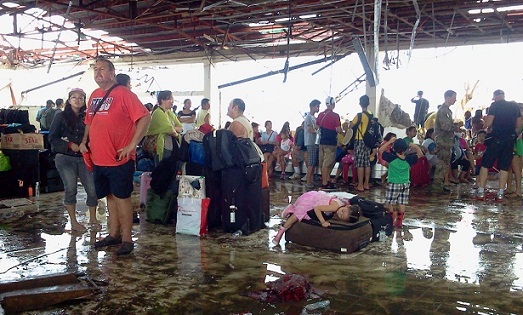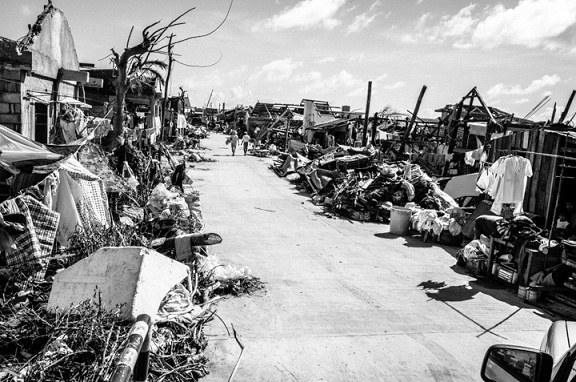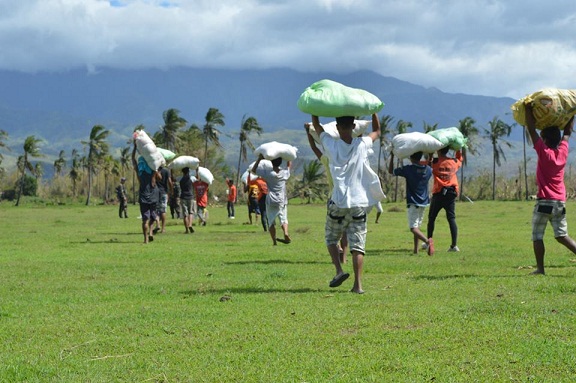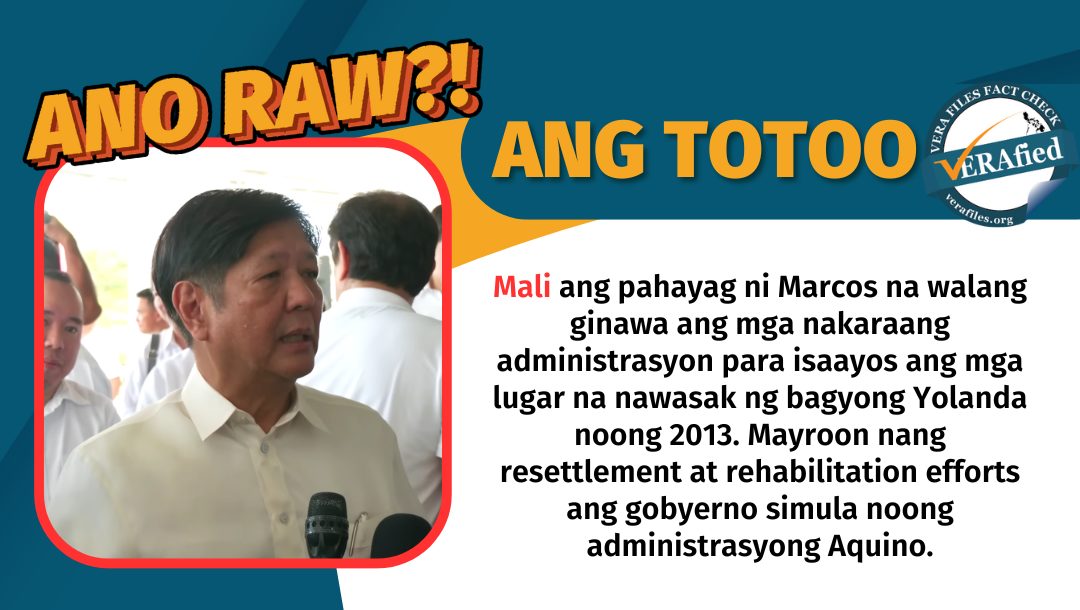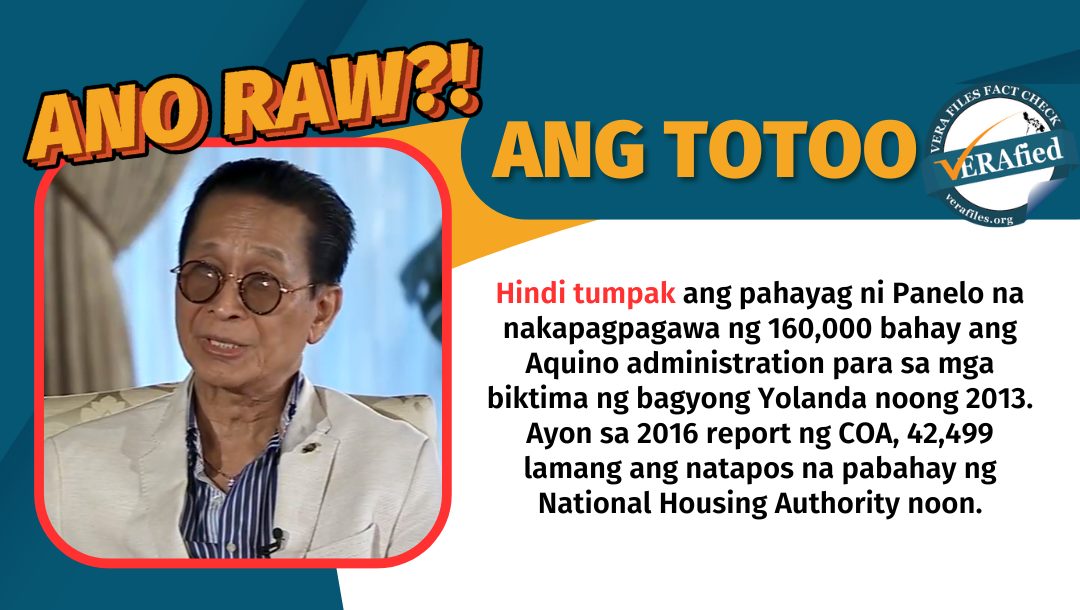By ATTILA KULCSAR and VINCENT HENSON
Photo by PETER CATON of HelpAge International
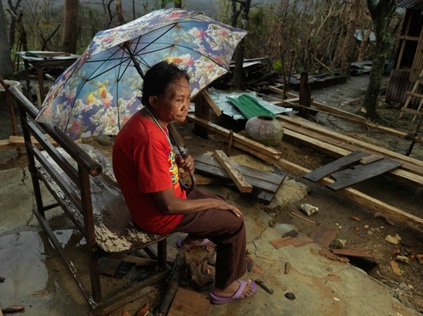 FRANCESCA Genemilo, 78, sits on a bench where her house once stood. She stares pensively at the ruins, clutching her blue umbrella, one of the few treasured possessions that supertyphoon “Yolanda” did not take from her.
FRANCESCA Genemilo, 78, sits on a bench where her house once stood. She stares pensively at the ruins, clutching her blue umbrella, one of the few treasured possessions that supertyphoon “Yolanda” did not take from her.
She lives in Barangay Bulak, a village up a hill in Matag-ob, Ormoc in Leyte province. Yolanda has turned the road to her village into nothing more than a mud and rock track.
“It’s about 20 minutes up the hill, but the very old and very young can’t come up and down it now, it’s too hard,” Genemillio said. “My house has been totally destroyed; I can’t even get my clothes and cooking utensils out from under the rubble. “
Genemilo and her husband, who is 85 years old, are taking shelter in the health center that has very little roof left. “My husband is ill and lying on a bed there, but no medical staff has been back to the health center. No one is coming to see us. Because he is old, I think the medical services think his case is not an emergency,” she said.
This was already three weeks into the disaster that happened morning of Nov. 8.
Sadly, Genemilo and her husband are not alone in their misery, yet very few have taken notice. Older people are often extremely vulnerable after disasters, especially those with disabilities, reduced mobility and poor health. Queuing for water, food, medicine and shelter is extremely difficult for them.
According to HelpAge International, a nongovernment organization that focuses on helping older people, those who survive the disaster also seem to suffer from a different kind of trauma, as the feeling of loss is greatly amplified by decades of memories and emotional attachment over their destroyed property and livelihood.
In every disaster, the elderly are most vulnerable. Estimates of the data available suggest that as many as two-fifths of the people killed in Yolanda were aged 60 and older.
Previous tsunami and storm disasters around the world also point to a disproportionate effect on older people: In Hurricane Katrina, 49 percent of those killed were over 75 years, while in the 2011 Earthquake in Japan 64 percent of those killed were over 60.
So far more than 6,000 people are known to have died due to the typhoon. Data from the Philippine Government’s National Disaster Risk Reduction and Management Council show that 151 people out of the 393 fatalities whose ages were recorded were over 60 years of age—38.4 percent were older people.
With older people making up approximately eight percent of the general population in the worst affected areas, the numbers suggest that older people have been disproportionately hit, mirroring the trend in previous natural disasters.
Despite these vulnerabilities, there is a unique element in the Philippine scenario that sets it apart from other large-scale disasters. Andrew Collodel, Emergency Coordinator with HelpAge International, said the Philippines tragedy has been marked by the strength and energy of many older people.
“Many of the older people I have met are showing amazing resilience, often they are still living among the shattered remains of their houses, neither angry nor despairing. But they are clearly in need. Despite their spirit and sense of gratitude, many of them are very poor and are never going to be able to rebuild their homes or get their lives back on track without our help,” he said.
“We would like to see the UN Typhoon Haiyan Action Plan recognize the specific vulnerabilities and needs of older people. While it is to be commended that agencies are calling for child-friendly and women-friendly spaces, we would like to see this extended to vulnerable older people. Age-friendly spaces and age-friendly shelter would take into account the unique vulnerabilities of older people,” Collodel added.
Including older people’s needs in the design and allocation of shelter, for example, would mean a space that is well-lit, has easy access to emergency exits, and where necessary, would ensure older people are supported by constructing temporary shelters.
Water and sanitation facilities, and food distribution points need to be accessible for those with reduced mobility—small, and cheap modifications such as grab rails in sanitation facilities, and separate queues at distribution points have been known to make enormous differences to older people’s ability to meet their own needs.
Fransiskus Kupang, executive director of Coalition of Services of the Elderly (COSE), which is the local partner of Help International, said, “We need to include older people’s needs in all our emergency interventions. When designing programs, sometimes it is easy to forget that not everybody is as able-bodied as we are.”
Kupang said some older people could not come to some of the centralized relief distribution sites because they lived three kilometers away and could not walk through the muddy roads strewn with debris. They also cannot stand for long hours in a distribution queue. They do not usually have important documents, such as identification cards. “They have very different psychosocial needs,” she said.
Governments and humanitarian aid agencies need to realize that as far as the elderly affected by disasters are concerned, there is a fine line between being a survivor and becoming a casualty.
(COSE and HelpAge have distributed food aid to more than 40,000 of the most vulnerable people in hard-to-reach communities. They are distributing shelter materials to 4,000 households who have lost their homes and providing seeds and fertilizers to 8,000 farmers affected by Yolanda.)
